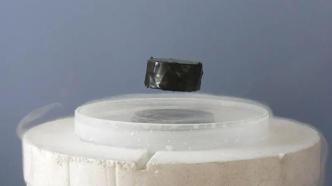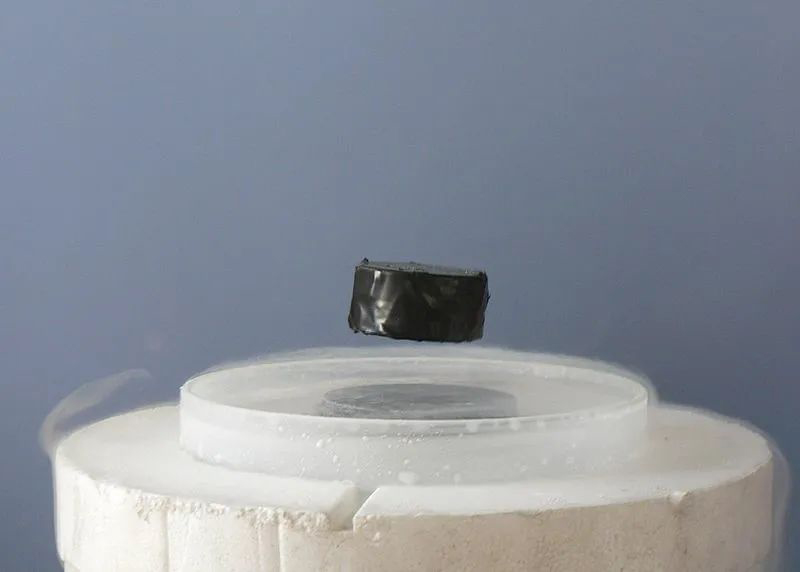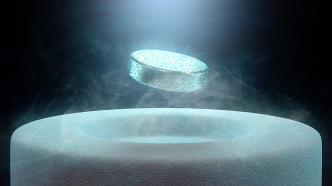
Recently, the Langa Dias research team at the University of Rochester in the United States announced the development of a material that exhibits superconductivity at room temperature and relatively low pressure. Some scholars say that this may be the biggest breakthrough in the history of superconductivity, but many scholars hold a wait-and-see attitude towards it. Although room temperature superconductivity is the "holy grail" that has been pursued by the material science community for a long time, due to the "previous record" of the research team, whether this achievement can be recognized remains to be verified.

Superconductor | Picture from wiki
The "Holy Grail" of materials science
A superconductor refers to a conductor that can achieve zero resistance at a specific temperature. It is a lossless conductive material that is superior to conventional conductors. Current flows through the superconductor without heat generation or voltage drop, so current can flow in the superconductor without attenuation.
The British "Nature" magazine, which published the research report, commented on the 8th that although superconductivity sounds promising, this state can only be achieved at low temperatures or very high pressures, neither of which is suitable. Many application scenarios also greatly limit their large-scale application.
Finding a material that can superconduct under ambient conditions has long been a focus of materials science research. But since the discovery of superconductivity in 1911, the scientific community has failed to crack the code of room-temperature superconductivity. Therefore, the near-atmospheric room temperature superconductor announced by the Dias team has attracted so much attention.
The room temperature superconducting material discovered by Diaz's research team is composed of nitrogen, hydrogen and lutetium, and can exhibit superconductivity at a temperature of about 20.6 degrees Celsius and a pressure of 10 kilobars (equivalent to 10,000 times the standard atmospheric pressure).
However, the research paper notes that further experiments and simulations are needed to determine the exact stoichiometry of hydrogen and nitrogen and their respective atomic positions to gain further insight into the material's superconducting state.
The application of superconducting materials has broad prospects
"In our increasingly electrified world, the impact of having a material that conducts electricity with zero resistance at room temperature and ambient pressure would be staggering -- imagine transmitting electricity for thousands of kilometers with essentially no loss," said the journal Nature.
According to the researchers, the development of this superconducting material heralds the dawn of room-temperature superconductors and their applications. This will enable superconducting consumer electronics, energy transfer, and improvements in magnetic confinement fusion, among other things.
Obviously, if all wires use superconductors, there will be no energy attenuation, and the significance of superconductors is obvious. The UHV transmission technology used at this stage is actually to increase the voltage of the transmission line to reduce energy loss as much as possible. If superconducting wires are used, this problem will not exist at all, and the entire industry will be completely rewritten. For example, electricity can be transmitted directly at the mains voltage without substations at all.
In fact, superconductors have already been used in daily life, and the nuclear magnetic resonance equipment in hospitals uses superconductors, which involves another important application direction of superconductors, which is to generate large magnetic fields. A magnetic field can be obtained by using an electric current, and the greater the current, the stronger the magnetic field. However, the significance of superconductors becomes apparent when a considerable portion of the electrical energy is lost in Joule heating caused by electrical resistance during current transmission.
The team's "previous record" is doubtful
Although the research results have caused a sensation in the scientific community, many people are still on the fence about the results. On the one hand, it is because the results of repeated experiments have not yet come out, and on the other hand, it is because of the "convicted record" of Dias's team.
The "Nature" magazine commented that Dias' team's "these measurements are consistent and comprehensive. However, the study authors' findings will undoubtedly cause controversy, because the same team of researchers previously studied room temperature superconductivity. The report was withdrawn". The review emphasizes: "Independent measurements of the material, its properties and the manufacturing process would help to remove any doubts about the findings."
Dias has twice claimed to have achieved a leapfrog breakthrough far beyond his peers in the field of superconductivity, but neither has been repeatedly verified by other research teams. Previously, Dias first claimed that he had synthesized metallic hydrogen under high pressure. Related articles were published in the American "Science" magazine, but other research groups failed to repeat the verification, and he himself later claimed that due to improper preservation, the preservation of metallic hydrogen was impossible. The pressure of the device leaked, and finally the metal hydrogen vaporized and disappeared due to insufficient pressure. Later, Dias did not re-synthesize metallic hydrogen. As a result, metal hydrogen has become an "unsolved case".
Since then, in the fall of 2020, the research of the Dias team caused a sensation again. They reported in a paper in the journal Nature that a compound containing carbon, sulfur, and hydrogen exhibited superconducting properties at about 15 degrees Celsius. However, subsequent attempts by several research groups to repeat the experiment failed, and because Dias did not disclose the original data, many people believed that he used the wrong method in the data processing of the magnetic susceptibility, and got an incorrect conclusion. In September 2022, the editorial department of the "Nature" magazine withdrew the paper due to doubts about the experimental data of the paper and other reasons.
However, since the pressure required for this research is relatively easy to achieve under laboratory conditions, the threshold for other research teams to repeat the verification of this result is not high. If the results of the new experiment can be replicated by other research teams, then this achievement may be "revolutionary" and is expected to hit the Nobel Prize. "Empty Satellite". After all, any scientific research is not a one-off opinion and must be able to stand verification.



You actually explained that terrifically. web page You explained that really well. casino en ligne You said that effectively! casino en ligne Regards, I value this. casino en ligne You explained this really well. casino en ligne Good info, Cheers! casino en ligne Cheers, Valuable stuff! casino en ligne Effectively expressed really. ! casino en ligne Kudos, Quite a lot of tips. casino en ligne You actually mentioned this fantastically! casino en ligne